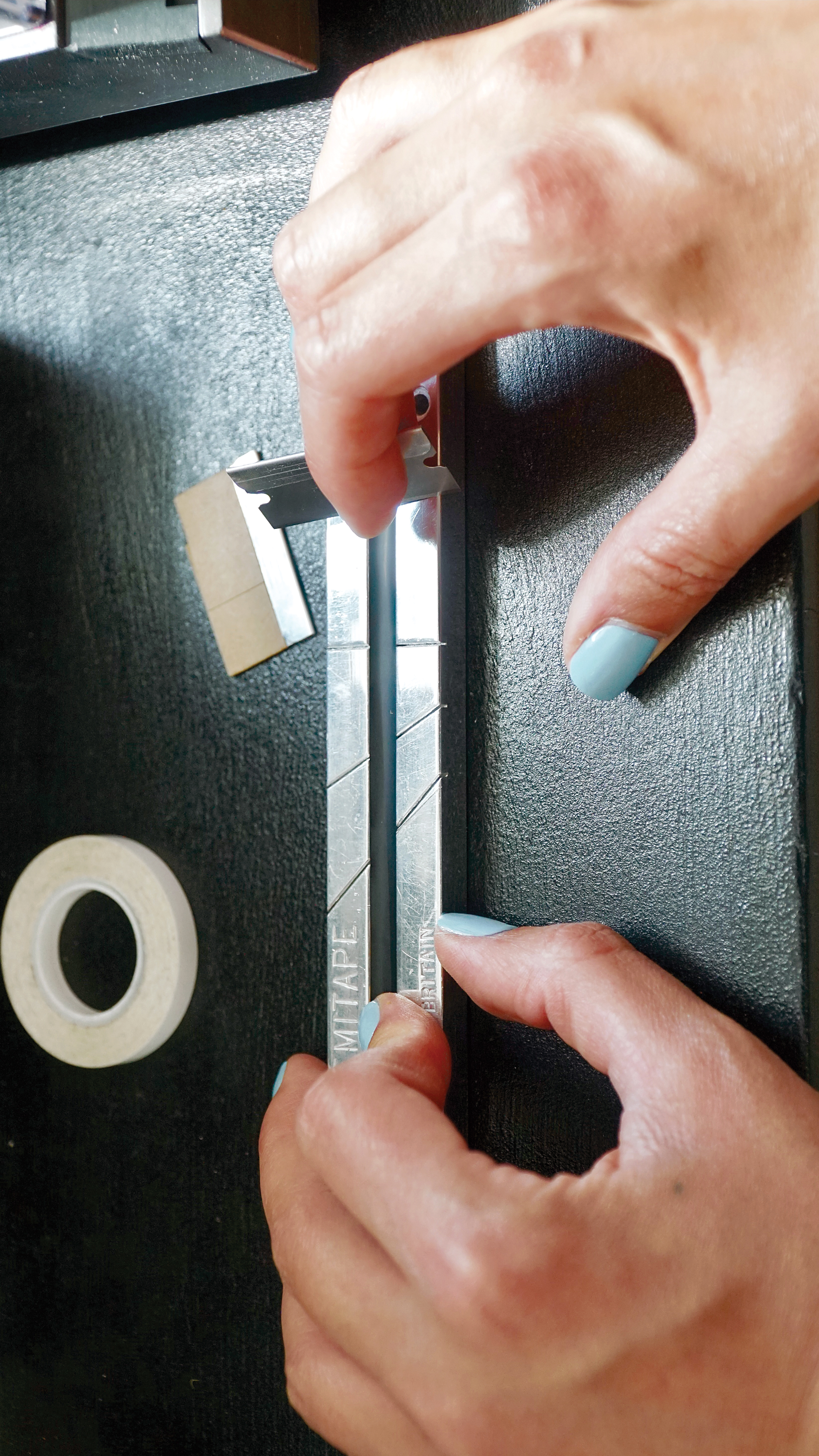I’ve been looking for a hardware compressor for tracking purposes, so when I saw the attractive price of Lindell Audio’s LiN76, I decided to grab one. I’ve owned a few 1176-style hardware clones, other similar hardware compressors, and (of course) the plug-ins, but I’m not going to do a side-by-side comparison here. I mainly mix in the box, but I wanted to gauge whether a hardware compressor could be useful in my workflow.
The LiN76 is a two rack space unit compressor, and the controls on the front panel will look familiar to anyone who has used a Universal Audio 1176. On the back are 1/4-inch TRS jacks for input and output (but no XLR) and a trimmer potentiometer (pot) for meter calibration. There is also a power connector for the external AC transformer (DC conversion is done in the chassis). The front panel reminds me of a black and white photo negative of the famous “blue-stripe” (revision A and B) era Universal Audio 1176, but the LiN76 is not a copy of any specific revision. Lindell selected their favorite characteristics from three to four different 1176 revisions: An input section similar to a revision G and an output section based upon revision A, with some of the input circuitry inspired by a revision D. Lindell told us that the LiN76’s FET was selected specifically for its vintage-style compression “action” that offers a deeper character instead of the cleaner, modern FET vibe found in many other readily available clones.
As with nearly all of my gear, I opened up the LiN76 to take a peek inside and saw a clean looking build, with good-quality, discrete components. There are a couple of balanced line receiver ICs (integrated circuits), but none are surface mounted, and the output stage has a Cinemag transformer. If you are unfamiliar with the specific revisions of an original 1176, a quick internet search (“1176 revision history”) should turn up an informative blog on Universal Audio’s website.
I set the LiN76 up as soon as I received it and was confronted with a few challenges. I prefer an IEC power cord with an internal power supply, or even a “line-lump” power supply versus the LiN76’s wall-wart plug. Unfortunately, it would not fit into my rack-mount power conditioner, so I had to locate a short extension cord before I could plug it in. After a bit of time warming up, I noticed the meter (an old school VU / not a strip of LEDs!) was slightly off the zero mark, so I grabbed a flat blade screwdriver – okay, not true, I used a guitar pick. Since the pot is on the back of the unit, adjusting the VU meter is already a bit awkward. However, the control was extremely sensitive and would peg the meter left, or right at the slightest touch! It took me several attempts (holding my breath) to adjust it correctly.
Unexpectedly, the pots on the front panel are detented (or stepped), which is a nice touch and makes recall much more effortless! After studying the included quick start guide, some online specs, and briefly fiddling with the dials, I realized the Attack and Release controls work opposite of most 1176-style compressors. I emailed Lindell support, and they confirmed this (and this is now noted on their website). When the knobs are rotated clockwise, the timing gets slower (versus faster on a typical 1176-style compressor). I had to think carefully before making changes at first, but I eventually got used to it. If you are a long-time 1176 user, and comfortable with electronic work, you could change the direction of the controls by swapping the wires going to the outside legs of the potentiometer. However, Lindell suggests leaving it as is – you can always just label the settings as a reminder.
When put to use in a singer/songwriter tracking session, I found it easy to dial in some light gain reduction at 4:1 to shape the vocal, but without inhibiting the intimate sounds we were getting. On a louder vocal, I could push the LiN76 into interesting harmonics without going into the red on my converter. In a mix session, I auditioned it on kick and snare and quickly dialed up some nice punch. Using the “all buttons in’’ trick took a little extra effort to get all of the controls to stick at once, but once engaged, it was pretty easy to get that familiar crushed and blown-out drum or vocal sound. I was also able to tighten up a bass track and reign in a strummed acoustic guitar with minimal effort. All in all, it was doing everything I would expect from this style of compressor.
I was happy to learn that the Lindell LiN76 can do some of the same tricks I’d expect from a classic 1176. I use more plug-ins at mix time out of convenience (and maybe laziness); thus, I will use this primarily for vocal tracking sessions, where I found the LiN76 did exactly what I needed. Although the Attack and Release knobs might be confusing for some users, it’s a solid piece of gear with a real output transformer at a fantastic price!




_disp_horizontal_bw.jpg)